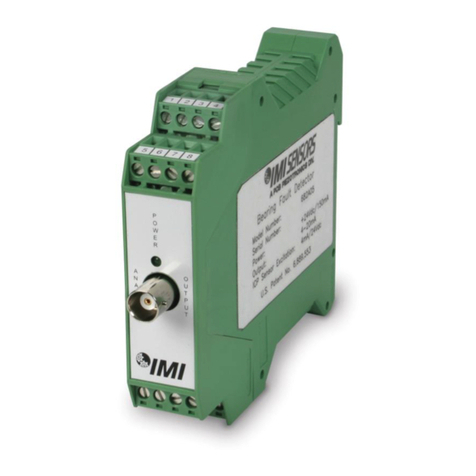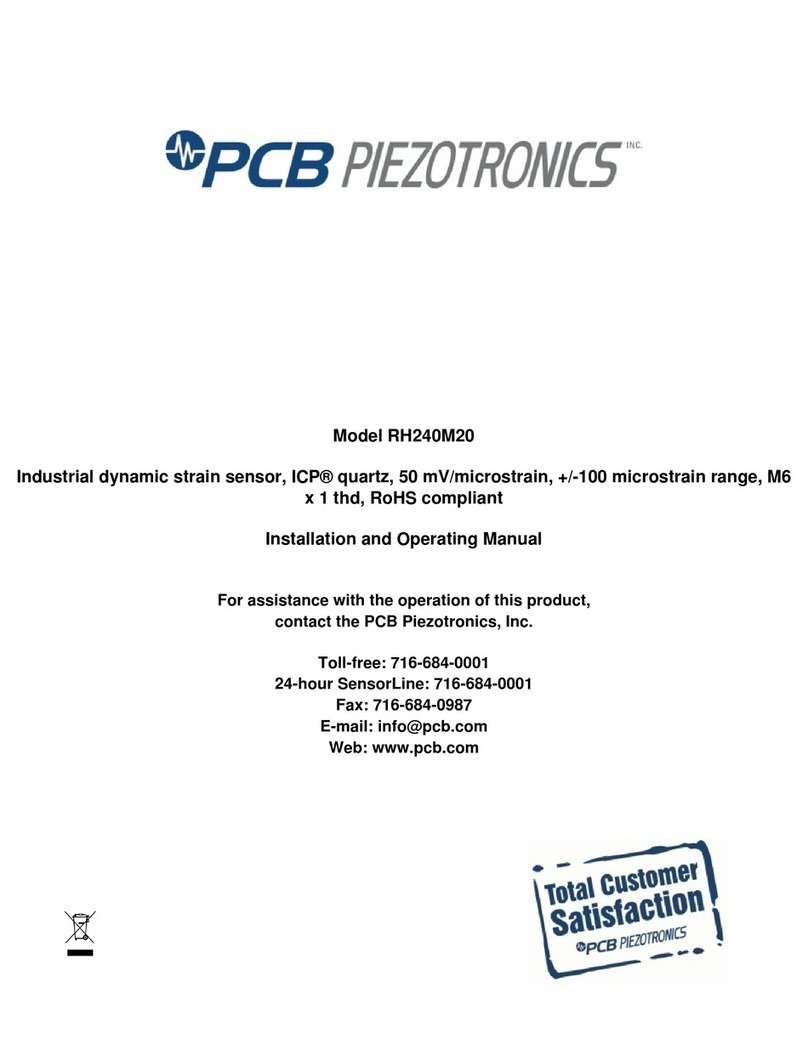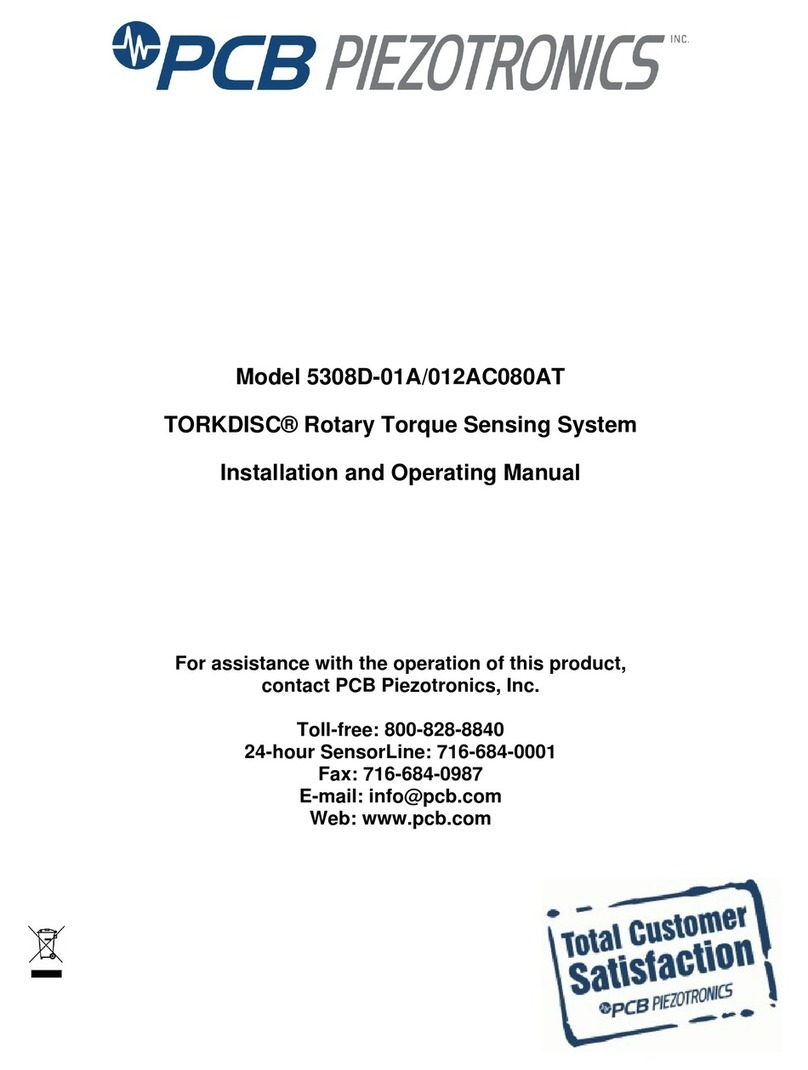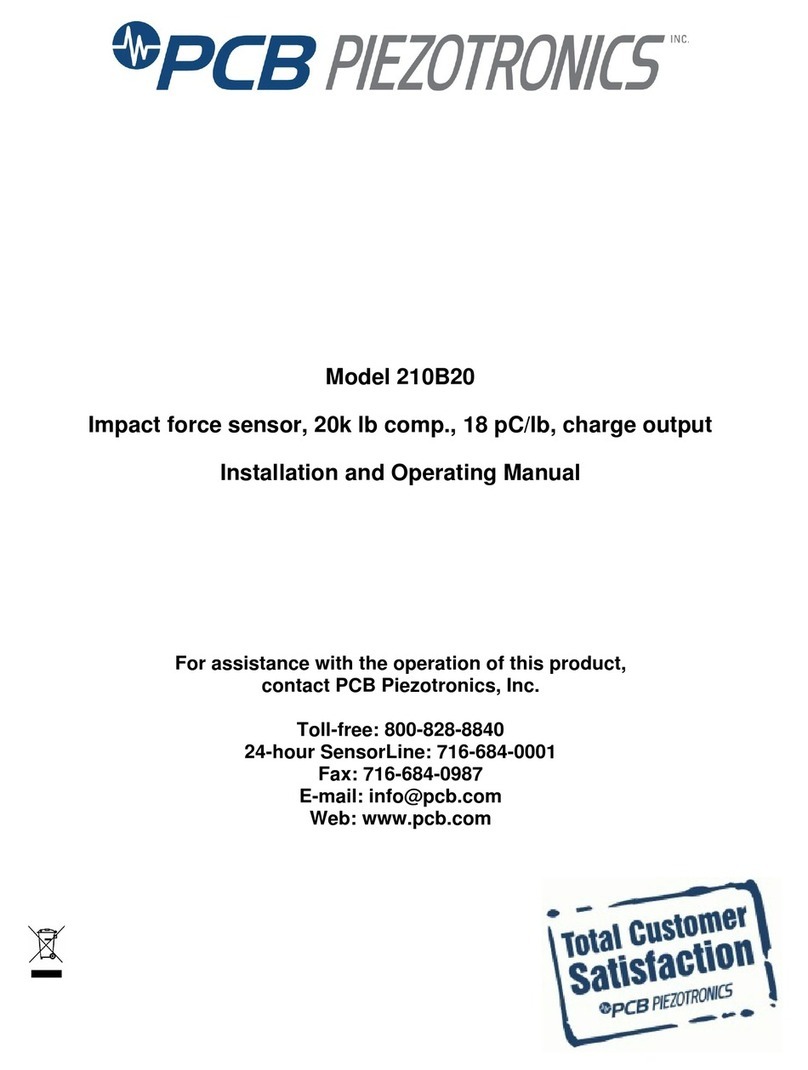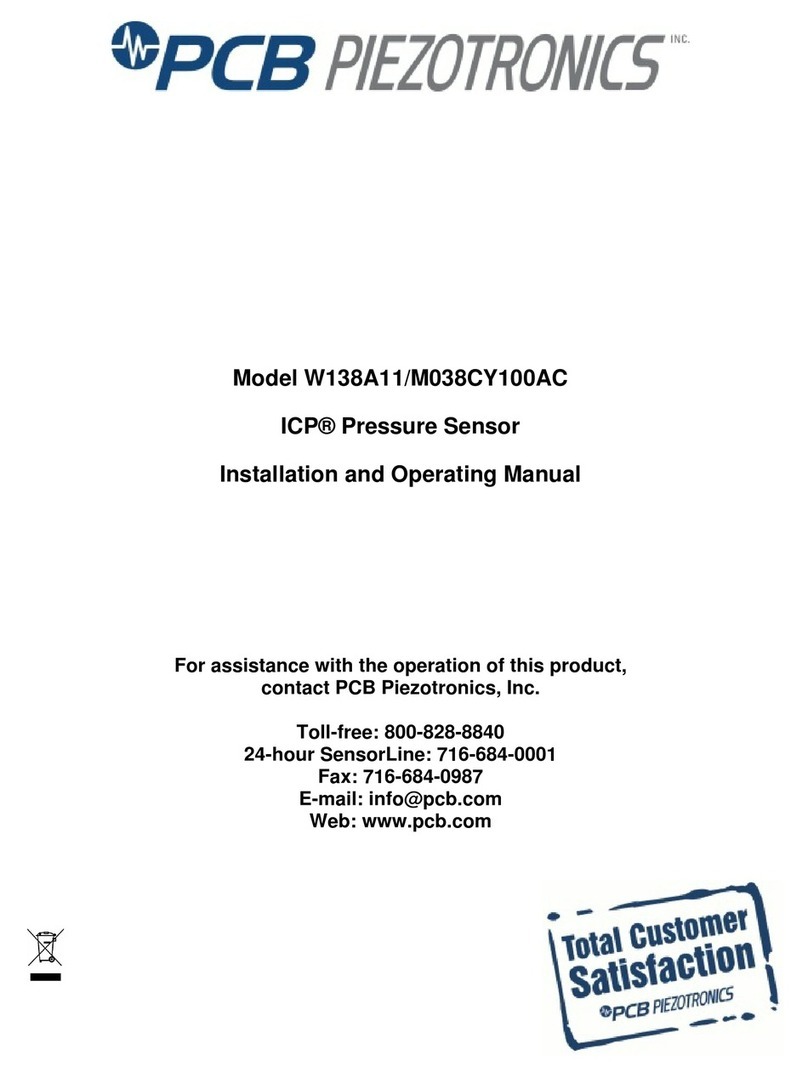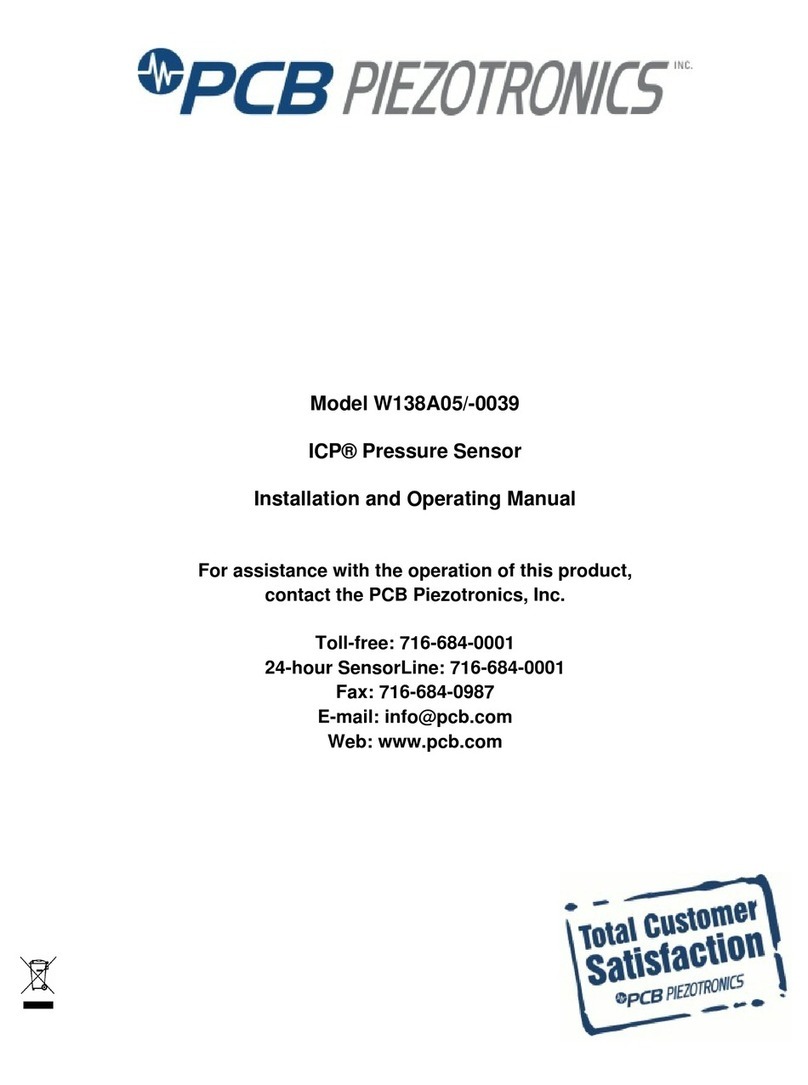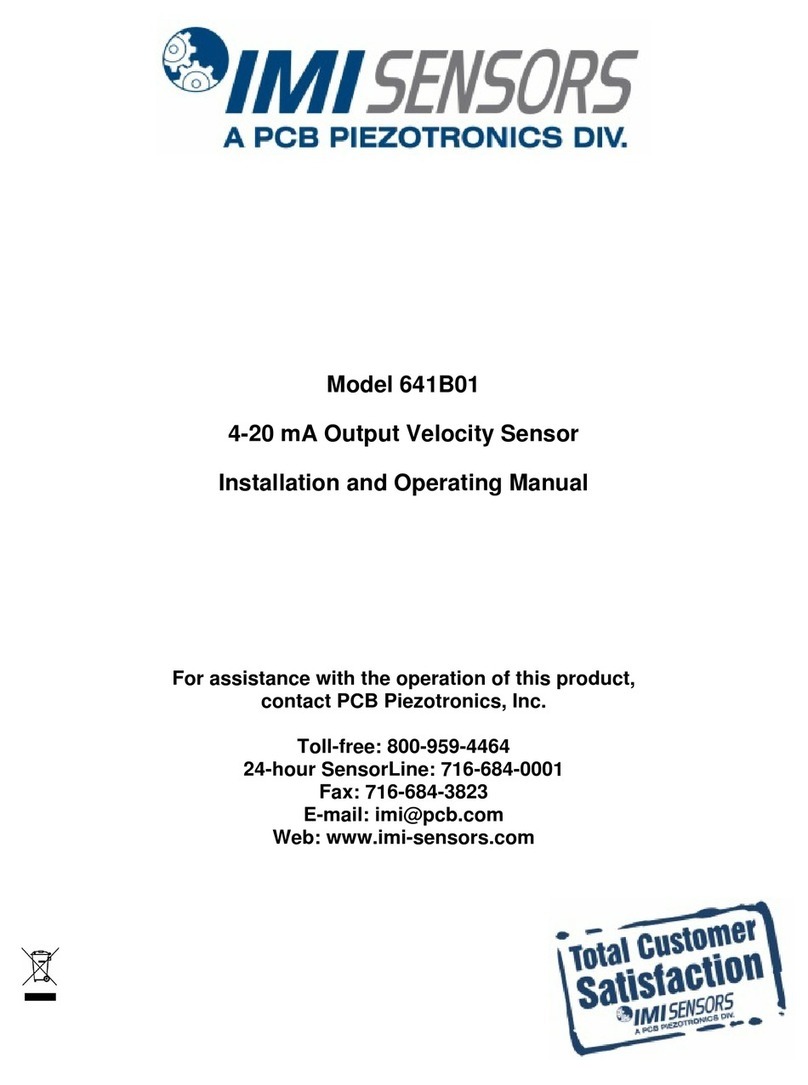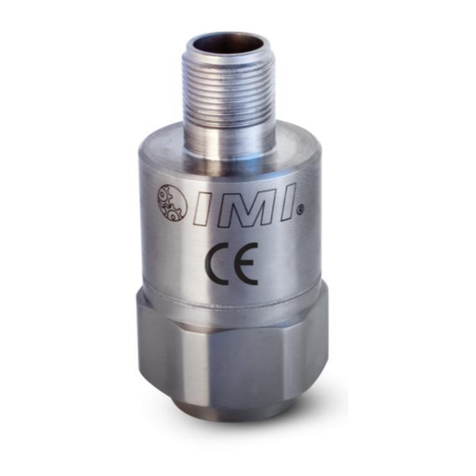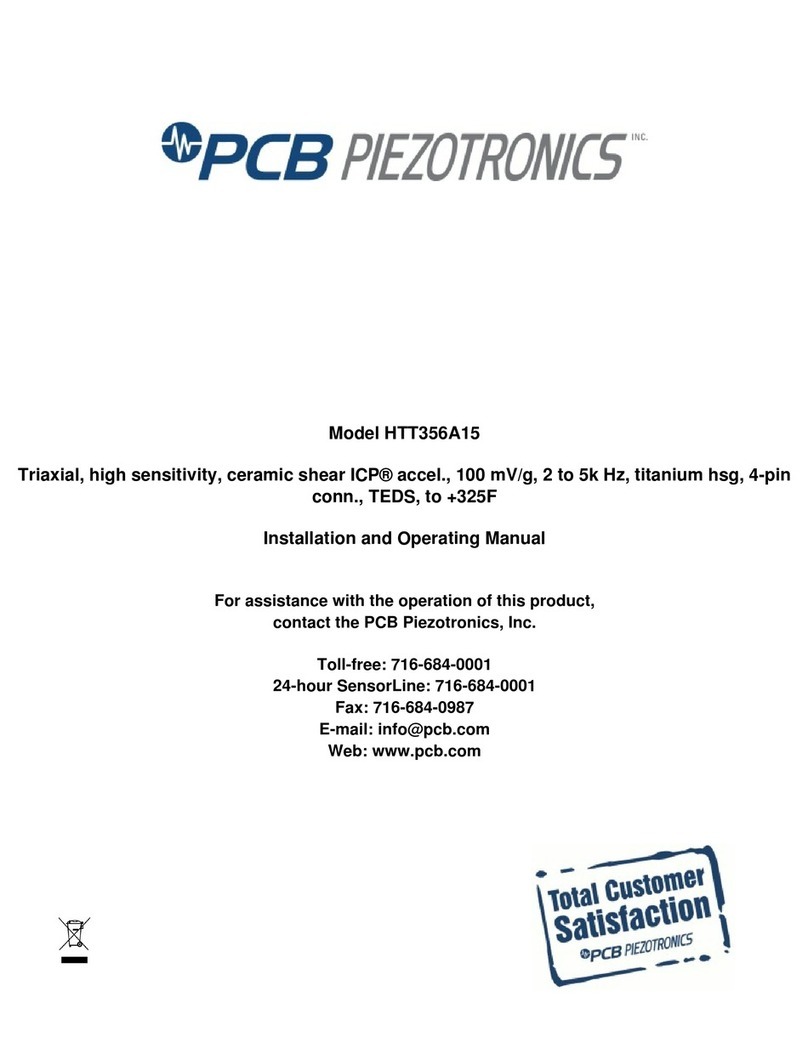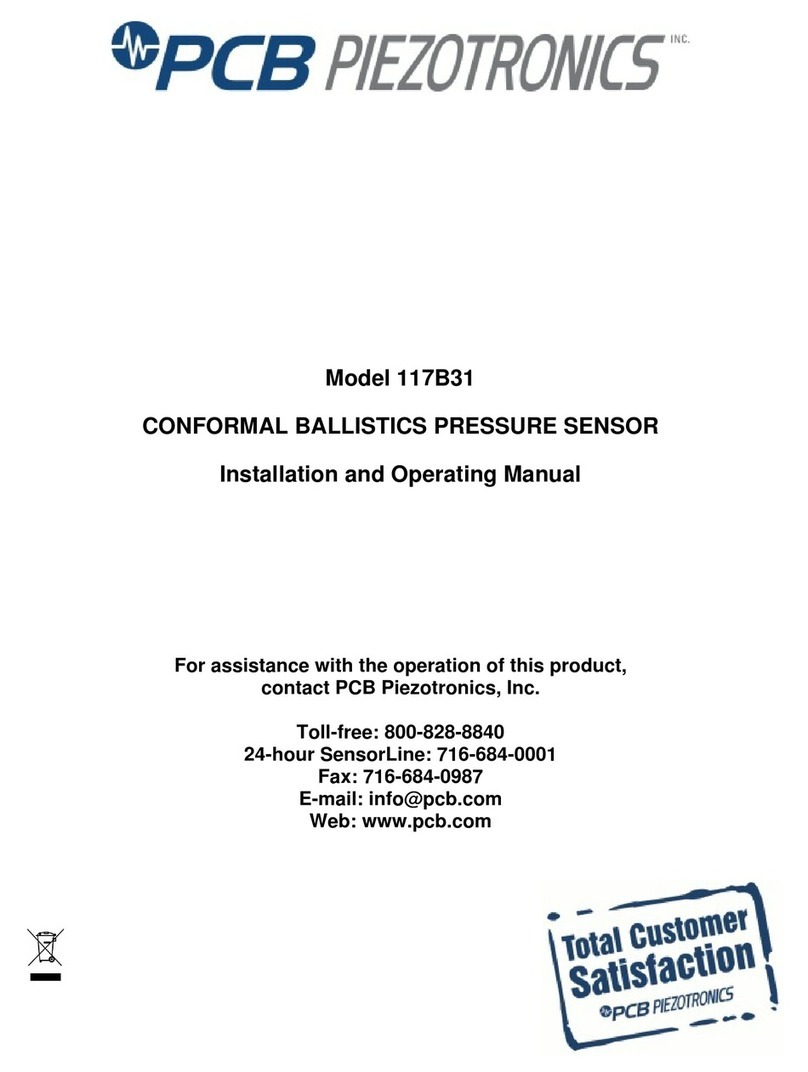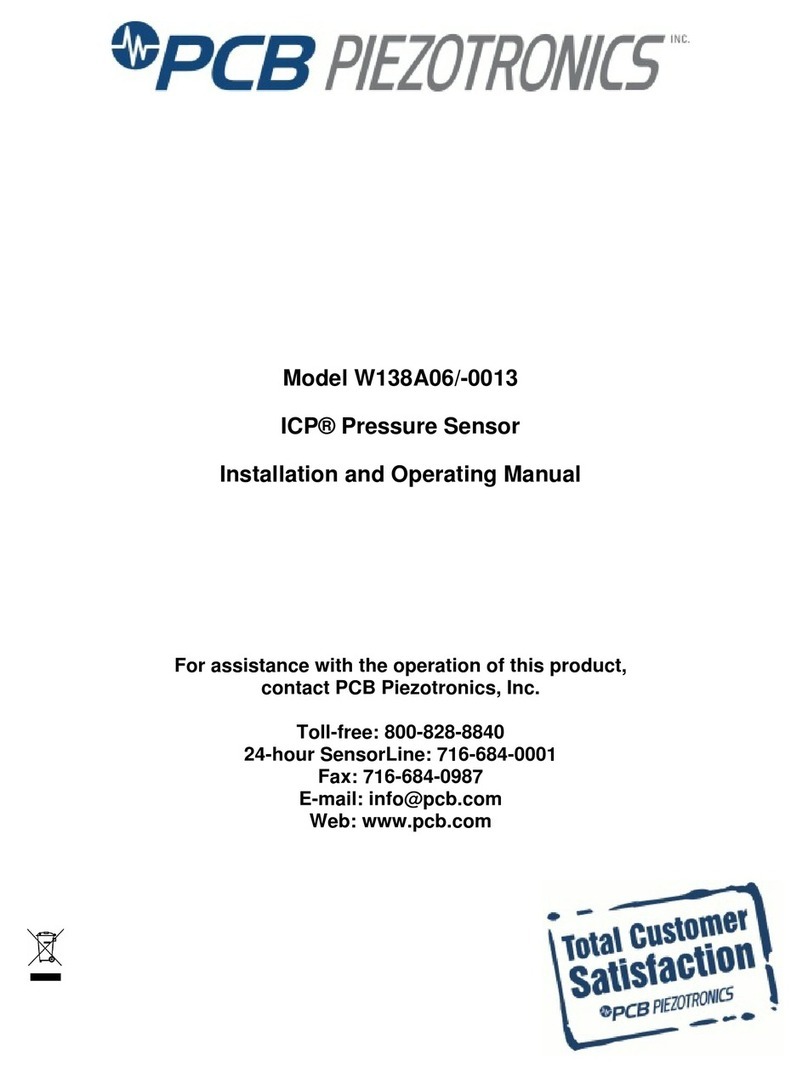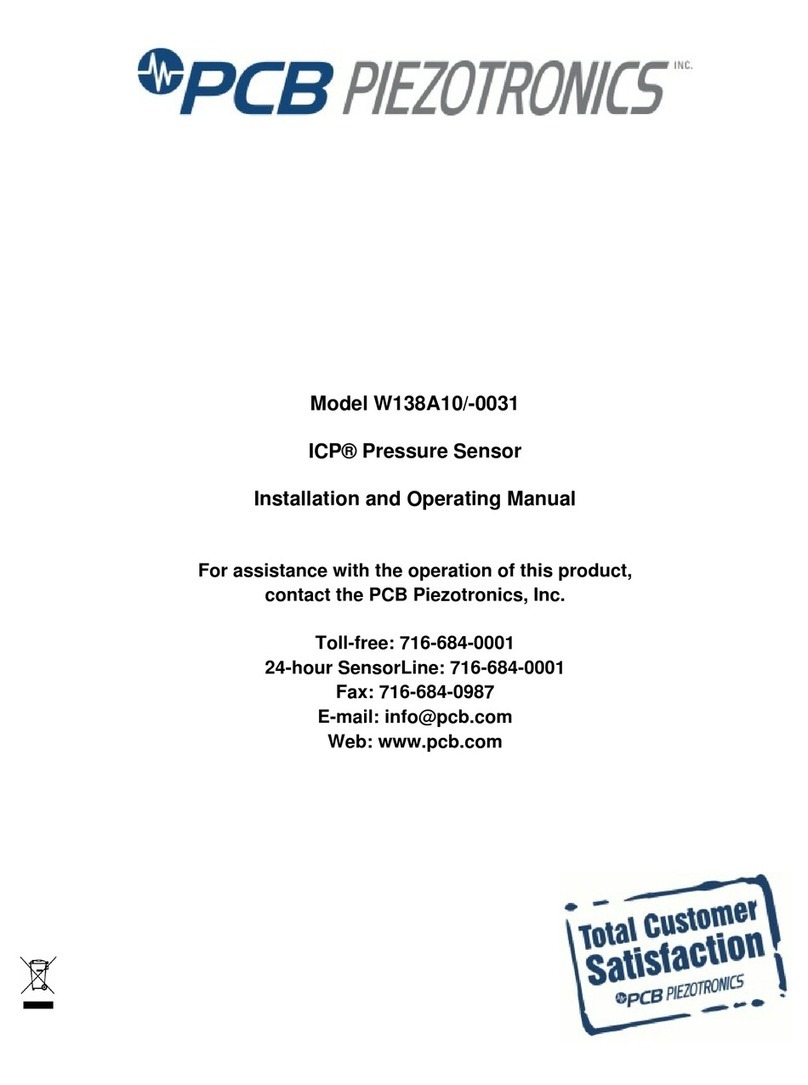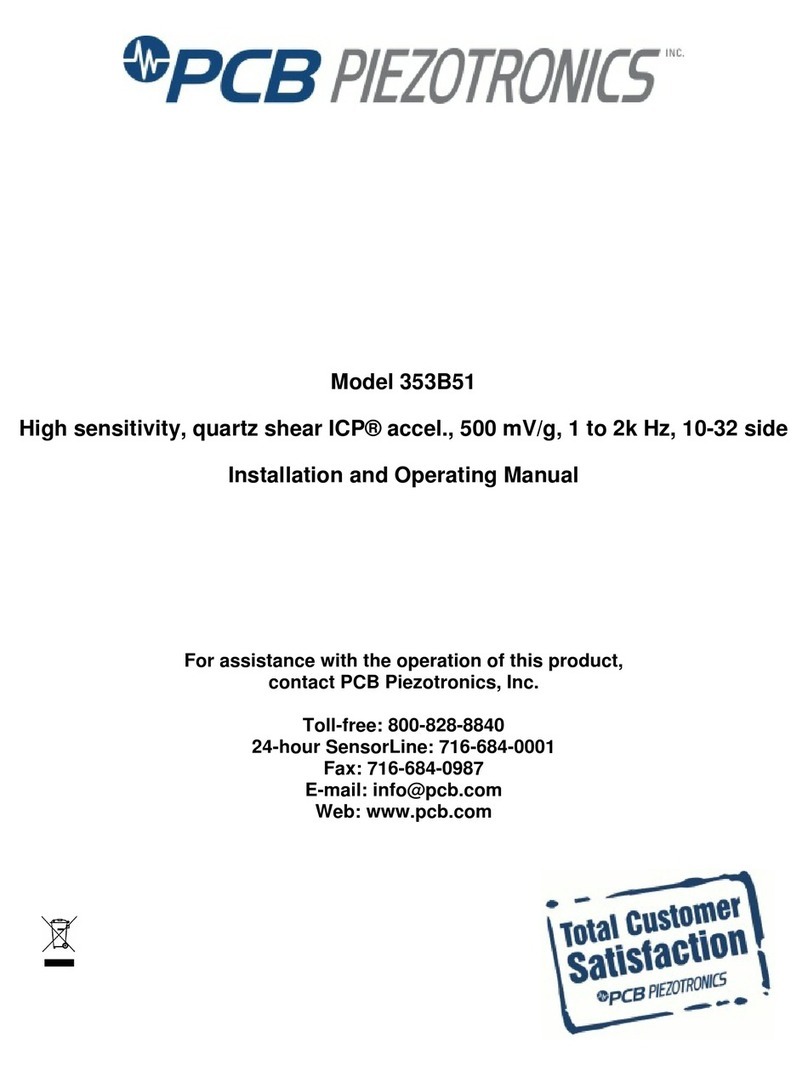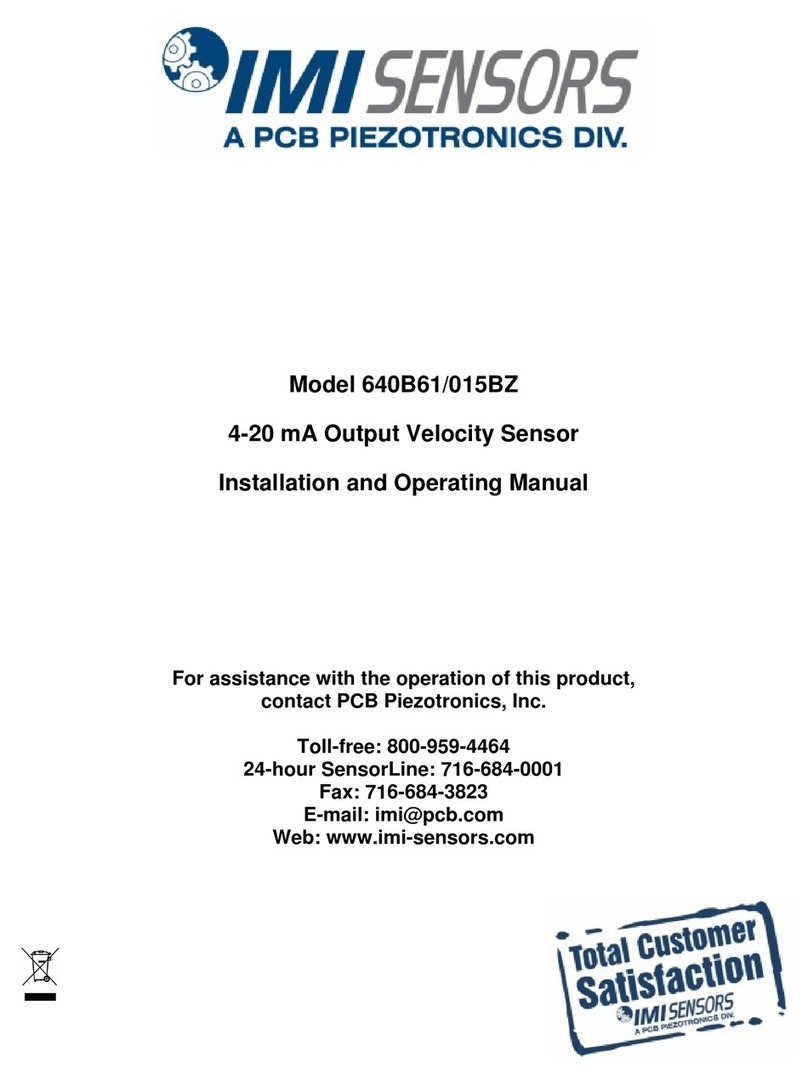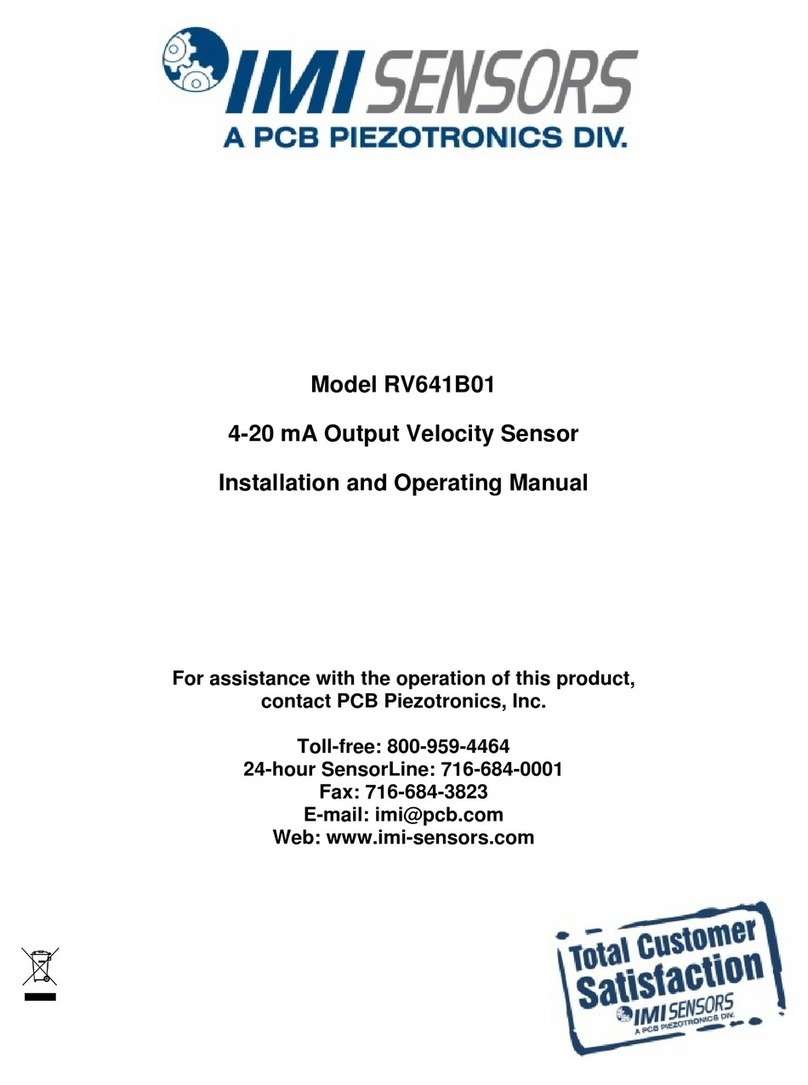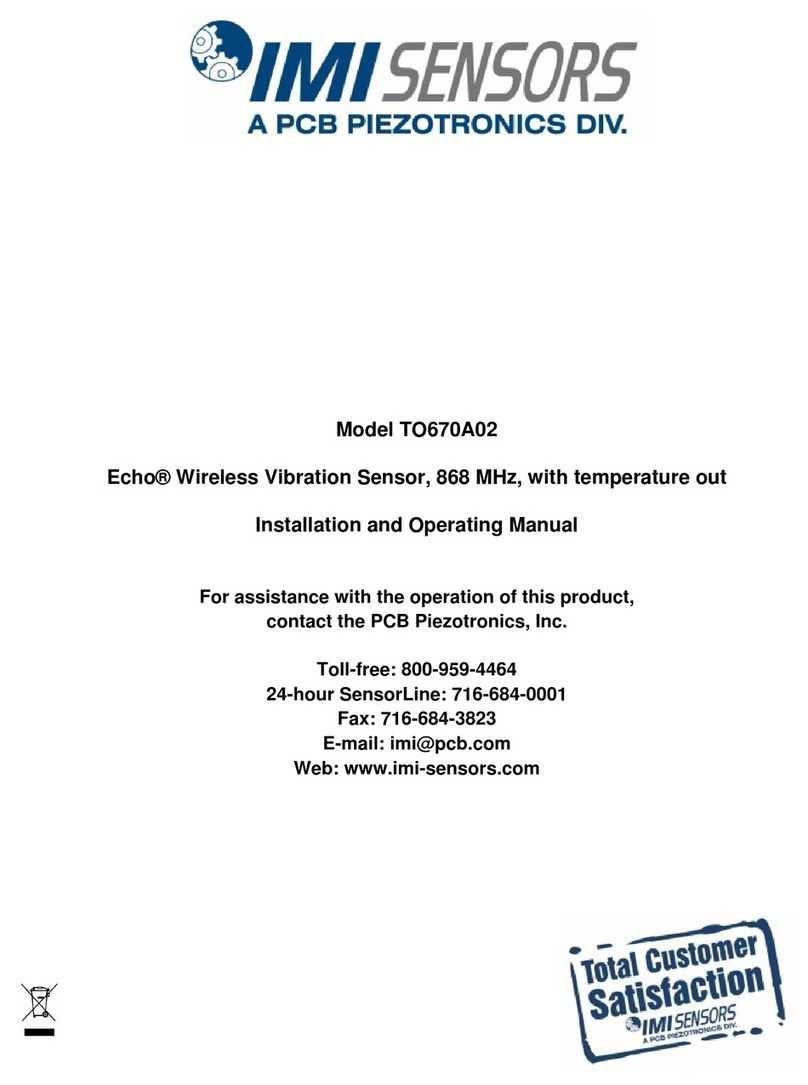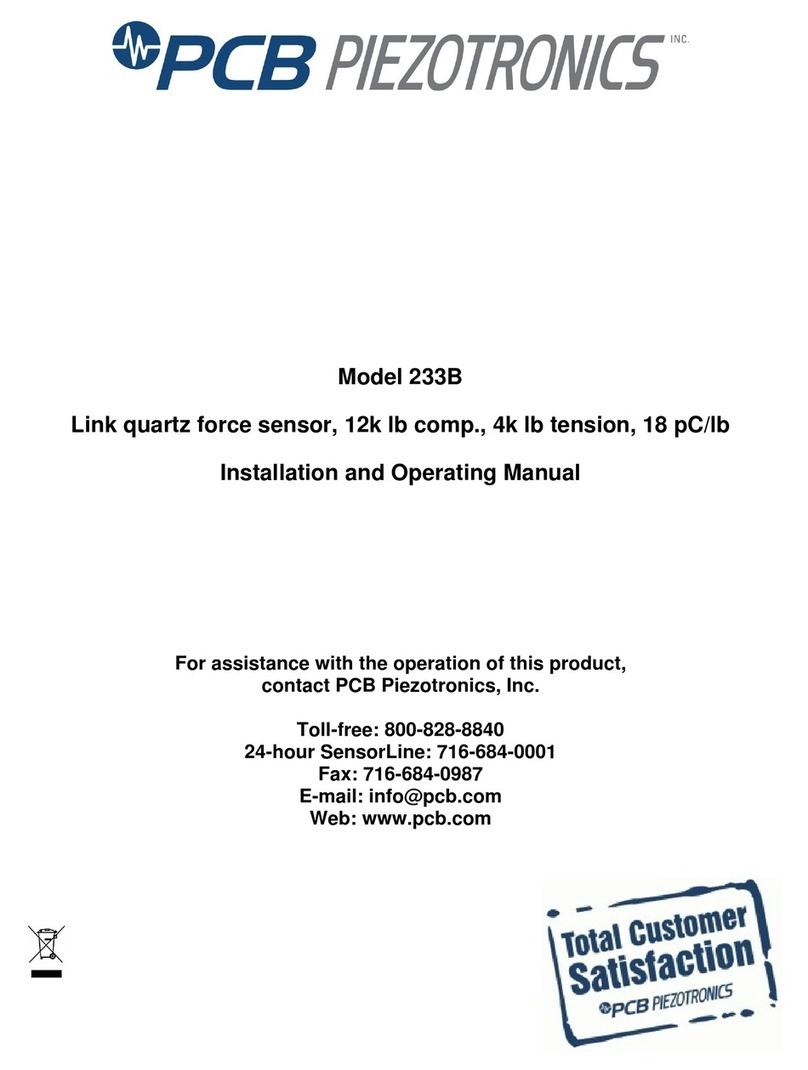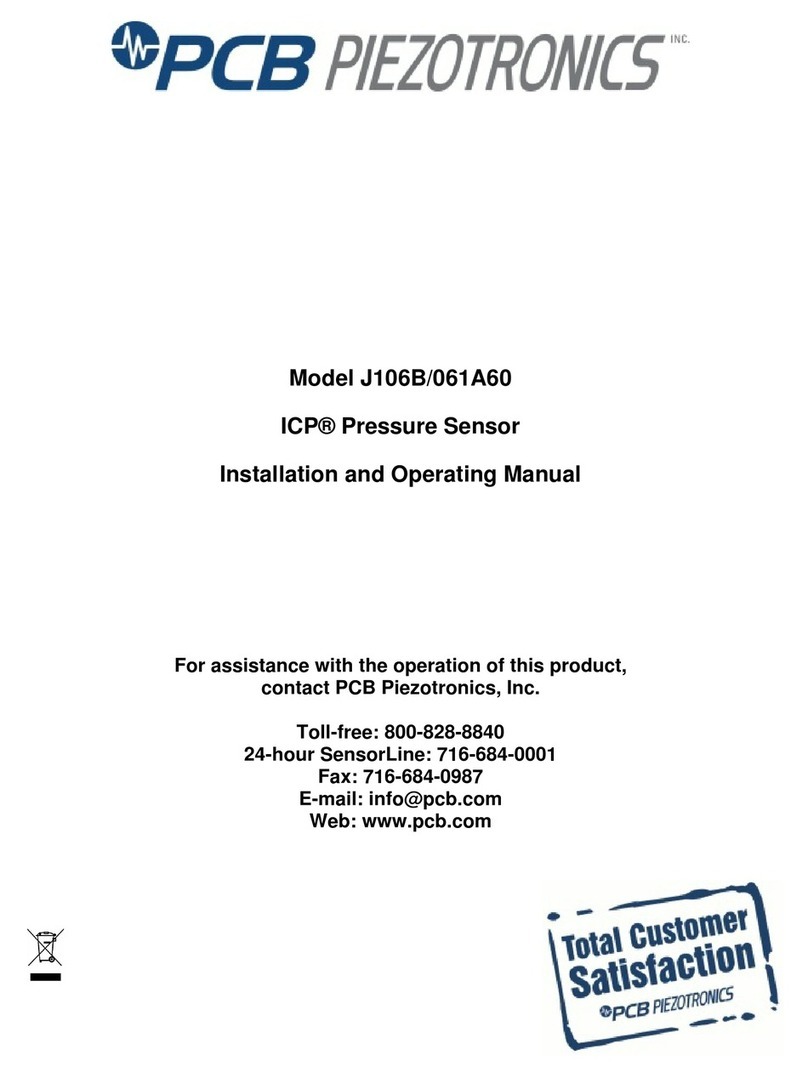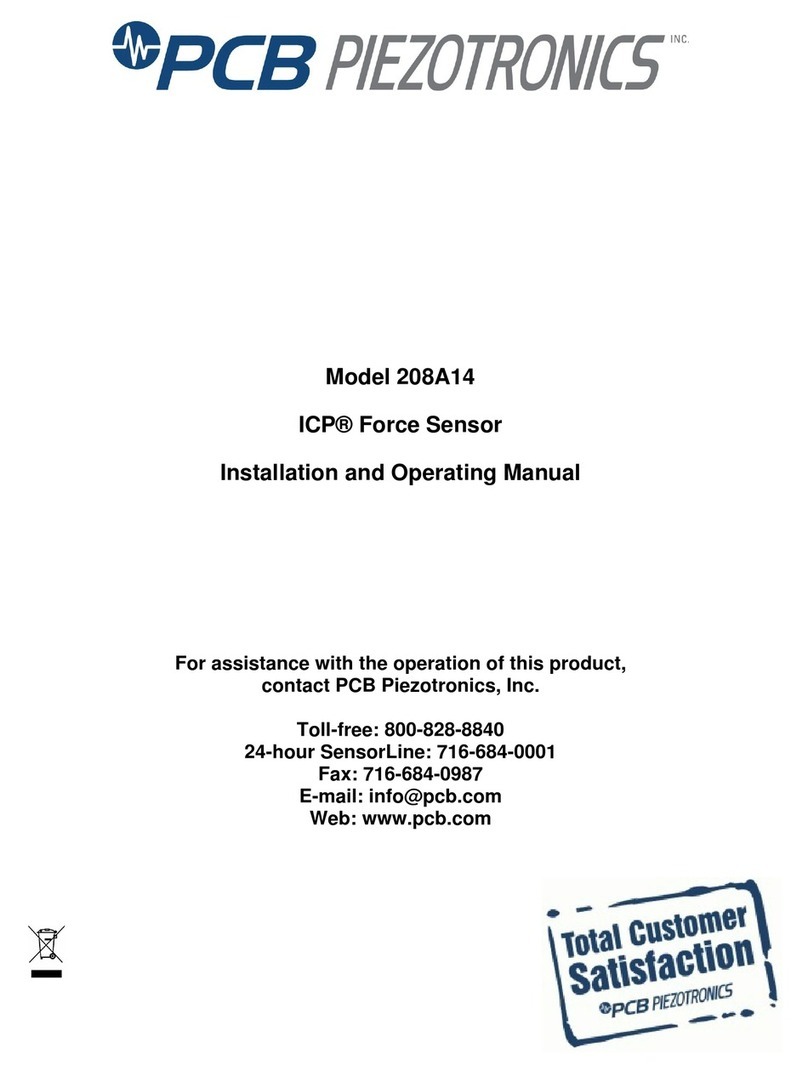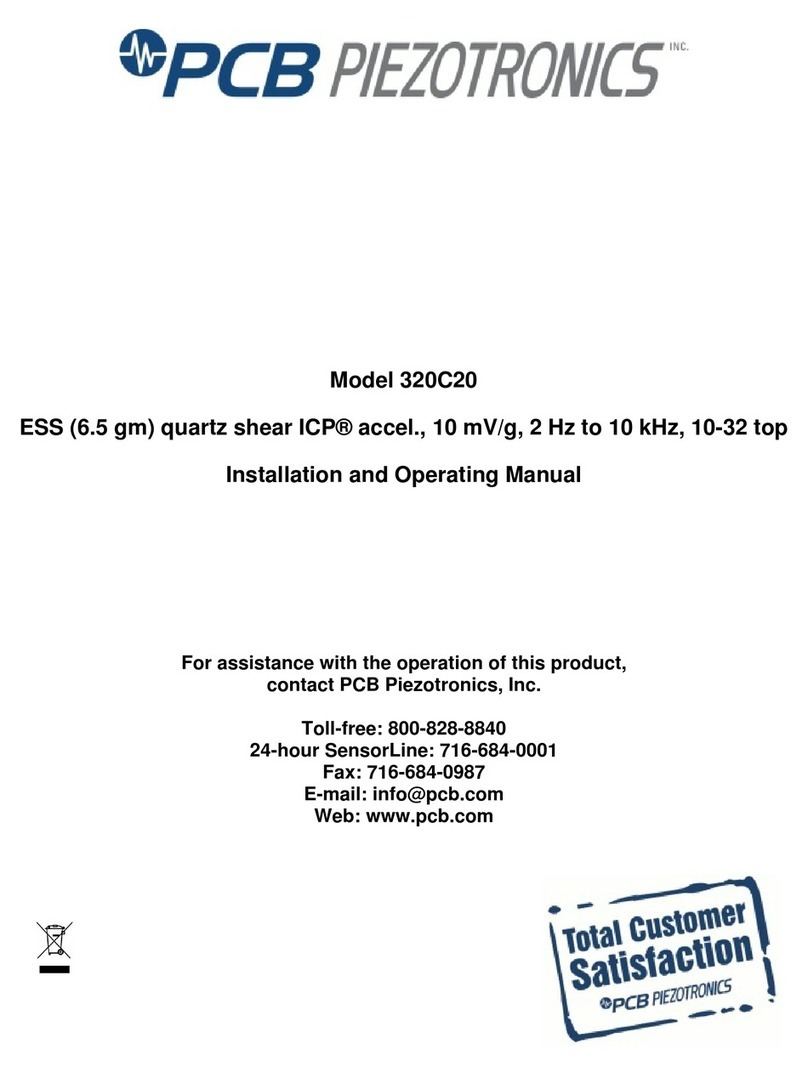
MODEL 8120-400A AC SIGNAL CONDITIONER OPERATION MANUAL
1.0 DESCRIPTION
Model 8120-400A Transducer Signal
Conditioner/Amplifier is designed for use with
resistance strain gage transducers that require
an AC excitation-amplification source. It
supplies a 3.28 kHz frequency, precision
amplitude-regulated excitation, which is
remotely sensed to the transducer. The
instrument uses a phase-sensitive carrier
amplifier-demodulator design so that both
direction and magnitude of the applied force are
determined. The 8120-400A contains all
necessary balancing and calibration controls
and condition/amplify the applied input to a
standard ±5 volt DC analog output level. Two
analog outputs, both having low-pass cutoff
frequencies, one of 2 Hz and the other of 400
Hz, are provided. The filtered outputs provide
for averaging of signals containing noise or
other unwanted dynamic components that are
periodic in nature.
The 8120-400A is used in applications
involving transformer coupling of the strain
gage bridge (rotary transformer coupled torque
sensors for example), and in applications that
require a high sensitivity (amplification) with
optimum "signal to noise" characteristics.
Carrier amplifiers offer higher sensitivity than
comparable DC-excited bridge amplifiers, and
since they respond only to the modulated carrier
frequency, they reject certain extraneous
voltages that cause interference with DC-
excited bridge instruments.
Note: If you have a PCB rotary transformer
torque sensor, please refer to Section 3 of this
manual, or to either the 4100 Series Rotary
Transformer Torque Sensor Manual (PCB
Manual #18227), or the 4200 Series Rotary
Transformer Torque Sensor Manual (PCB
Manual #18228), for calibration procedures.
Calibration of the instrument is made through
conventional shunt technique, using an
internally installed calibration resistor, or an
external shunt calibration reference, such as our
Model 8113A or 8113-105A Shunt Calibration
References. Front panel calibration buttons
provide for calibration in both the positive and
negative directions. An internal symmetry
control provides independent adjustment of the
negative direction sensitivity for transducers
that do not have symmetrical positive and
negative slope characteristics. Positive
direction calibration can be checked by means
of REMOTE CAL terminals on the instrument
I/O connector.
The 8120-400A Strain Gage Conditioner is also
available in two additional forms. The 8120-
410A is similar to the 8120-400A except it also
contains a dedicated 4.5 digit LED display with
a 3Hz update rate. The resolution of the digital
display is 1:5000 (0.02% FS). The display also
has a selectable decimal point, trick count
multiplier, and a trailing inert zero. For more
information on instruments with digital display,
refer to PCB Manual #27259. The Model
8120-430A contains a Limit section (in addition
to a Digital Indicator) that provides
High/OK/Low indications and outputs. Refer to
PCB Manual #19479 for more information.
The Digital Indicator and Limit features are
standard to all 8120 Series Instruments.
2.0 INSTALLATION AND CABLING
The following paragraphs provide the
instructions for instrument installation and
cabling.
Mounting
The 8120 Series Instruments can be operated as
bench-top units or they can be rack or panel
mounted. Clearance dimensions for a bench-
mounted instrument are given in Figure 1 and
cut-out dimensions for panel mounting are
shown in Figure 2.
